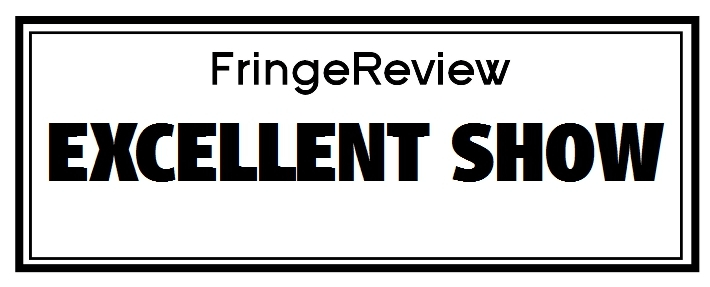FringeReview Ireland 2024
Na Peirsigh/The Persians
Amharclann Na Mainistreach/Abbey Theatre

Genre: Drama, Mainstream Theatre, Theatre
Venue: Peacock Stage
Festival: FringeReview Ireland
Low Down
A very successful interpretation of the oldest surviving European play in the oldest spoken European language, avoiding the pitfalls of unnecessary attempts of ‘updating’ an ancient historical story.
Review
Part of Dublin’s St Patrick’s Festival celebrating Irish Culture and Heritage, which ran from 15th to 18th March 2024, this Abbey production was performed in Irish with a new translation by Nuala Ní Dhomhnaill. I manage to catch the last day of the run. On the theatre’s website the play is advertised as ‘… a thrilling opportunity to encounter a rich new version of Europe’s oldest known surviving play in one of Europe’s oldest spoken languages.’ The rhythm of the Irish language lends itself perfectly to the style of a Greek play, in fact this was probably the most affecting performance of any Greek play in any translation that I have ever seen. The play had English surtitles projected above the stage throughout and kind ushers advised those who felt their Irish was not so great to sit further back to have a more comfortable experience reading the text whilst watching the play.
Everything seems at first very simple; the set, the costumes, the staging, but a lot of thought went into this productions directed by Conor Hanratty. The spectator’s subconscious gets drawn into another world, seen through an elaborate frame, as we would see a Dutch Golden Age painting. Maree Kearns’ set uses dark earthy colours to create a box with a set of stairs. A block with real candles centre stage and a lonely olive tree upstage right are the only additional items. Most entrances are from downstage left with the appearance of Darius the Great’s ghost, played with much paternalistic gravitas by Séamus Moran from centre upstage. The company consists of eight actors: Brendan Conroy, Deirdre Molloy, Catríona Ní Mhurchú, Bríd Ní Neachtain, Marion O’Dwyer, Karen Ardiff, Timmy Creed and Séamus Moran, who all take turns as the chorus and stay on stage throughout the 90 minute performance. Those who have solo parts exit and re-enter as chorus so unnoticeable as if they had never left the stage in the first place. Overall the movements choreographed by Eoin Mac Donncha, are poised and measured with the chorus often melting into the set design. The costumes by Joan O’Clery help to distinguish between the protagonist and the chorus. Chorus member wear long dark grey robes with elaborately embroidered round collars that are hidden under a dark grey satin wrap tunic until the scene at Darius’ tomb. Darius appears in a burgundy satin coat with a gold embroidered square hat made of black velvet. Empress Atossa, played incredibly gracefully by Karen Ardiff, wears a black coat with burgundy piping matching the burgundy sash around her waist and is reminiscent of a bishop’s cassock and fascia. Her collar is made of golden beads that later at Darius’ tomb are exchanged for one made of black beads. Like all women in this production she wears her hair down, but held back with a black scarf, in her case she additionally wears a golden headband (hair and make-up by Val Sherlock). She has two big monologues with the other two protagonists, Darius’ ghost and The Messenger, played by a suitable scruffy looking Timmy Creed. It falls to this character, just returning form battle, to tell Atossa and therefore us, what has happened in Salamis to Xerxes great army and navy. He recites a long list of those who perished, but the king, Xerxes is still alive. Atossa asks the chorus to summon the spirit of dead Darius. He arrives and scolds the absent Xerxes for his bad military strategy, but he foresees another ruinous battle that will bring down the Persian Empire, which he and his ancestors had built. With this dark prophecy the ghost leaves. From a far we hear a lament, that moves closer until Xerxes, played by sean nós singer Naoise Mac Cathmhaoil, enters the stage. He is dishevelled and his burgundy tunic, proof of his royalty, is tattered and stained. The play ends with Xerxes singing his long lament occasionally interrupted by a speaking chorus.
Aeschylus wrote this play eight years after the battle of Salamis. There is speculation whether he was himself involved in the hostilities. He certainly fought with the Greek against the Persians at Marathon in 490 BCE. It was the first prize winning entry at the Dionysia, the second biggest arts festival in the Athenian calendar in 472. Originally a trilogy, only the second play, The Persians survive.
While written by the winning side and historically close to the actual event, it shows a huge amount of compassion and a humane understanding for the losing side. This approach was not unusual for the time in which the play was written, but one would be very pressed to find a film, book or play in our age that would handle a similar situation in such an understanding manner.
The first half of the play feels a bit long. While for contemporaries reminders what great military leaders were involved in the fighting, would be useful, it is a bit dull for the average punter nearly two and a half thousand years later. The highlights for me where the incantations to summon Darius, which made great use of Paul Keogan’s skill as a lighting designer and the very clever use of a traditional unaccompanied Irish folk singer for Xerxes lament. Sean Nós (meaning something like ‘old-style’) is a sub-category of Irish folk singing and its focus is normally on the emotions of the theme of the song. This works perfectly with Xerxes kommós, a lament that would have been sung by the leading character and the chorus. This ancient Greek/traditional Irish fusion made for a perfect ending of this production, which thrilled the small, but enthusiastic weekend audience.


















































